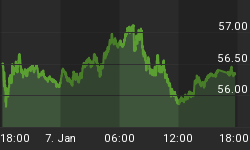The emotional adamancy which dominates most analysis of gold contributes to confusion and misunderstanding. For example, “Backdrop For Gold Today Is As Bullish As It Has Been In A Long Time”; or “Precious Metal Sector Is On Major Buy Signal”. These and other similar claims are often supported by reams of technical analysis – the best that money can buy.
And this is on top of general misstatements of fact. It would appear that there is virtually no justification for lower gold prices except when caused by manipulation associated with conspiratorial forces.
Otherwise world tension, terrorism, natural calamities, social unrest, economic weakness, interest rates, inflation, trade deficits, Indian jewelry demand, etc, etc. all put a ‘floor’ under the price of gold. At least this is what we are told.
And the timing. Oh, my word; the timing! “It’s now (or never).” “Gold has finally broken through its overhead resistance.” “$2,000/oz by the end of 2017.”
Does understanding gold require a degree in cyclical theory or financial mathematics? Or is it related to climate change?
A simpler and better explanation for gold exists. It only requires a bit of historical observation.
1) First, and foremost, is the simple fact that gold is real money.
Its value (purchasing power) is constant and stable. And its role as money came about through trial and error. Gold has stood the test of time.
2) Second, paper currencies are substitutes for real money.
Gold is also original money. It was stored in warehouses and the owners were issued receipts which reflected ownership and title to the gold on deposit. The receipts were bearer instruments that were negotiable for trade and exchange.
3) Third, inflation is caused by government.
One thing that should be clear from history is that governments destroy money. That might sound harsh, but it is true. And when we say “destroy” we mean just that. Inflation is practiced intentionally by governments and central banks. Its effects are severe and unpredictable. The Federal Reserve Bank of The United States has managed to destroy the U.S. dollar by bits and pieces over the past century. The result is a dollar that is worth 98 percent less than in 1913 when the Fed began its grand experiment.
The relationship between gold and the US dollar is similar to that between bonds and interest rates. Bonds and interest rates move inversely. So do gold and the U.S. dollar.
If you own bonds, then you know that if interest rates are rising, the value of your bonds is declining. And, conversely, if interest rates are declining, the value of your bonds is rising. One does not ’cause’ the other. Either result is the actual inverse of the other.
A stable, or strengthening U.S. dollar means lower gold prices. A declining U.S. dollar means higher gold prices.
In other words, higher gold prices are a direct reflection of a weakening U.S. dollar.
And please don’t confuse the U.S. dollar with the U.S. dollar index. The U.S. dollar index(es) do not tell us anything about the price of gold. A dollar index reflects changes in the U.S. dollar’s exchange rate versus other currencies.
Actual changes in the value of the U.S. dollar show up in the ever-increasing general level of prices for all goods and services – over time. (See A Loaf Of Bread, A Gallon Of Gas, An Ounce Of Gold)
The threat of world war is ominously present today. Countries and municipalities are going bankrupt. And acts of terrorism are an almost daily occurrence. This is in addition to an economy that can’t seem to improve enough or sustain an acceptable rate of growth.
So let’s buy gold, right? Maybe, maybe not. You see, gold doesn’t care about those things. It doesn’t care whether or not somebody fires a rocket armed with a nuclear warhead or the state of Illinois declares bankruptcy. And it doesn’t react to comments by Janet Yellen or Donald Trump. Indian jewelry demand is not on its radar. Nor are housing starts.
Gold responds to one thing. Changes in the U.S. dollar. Nothing else.
A continually weaker dollar over time means higher gold prices.
Periods of dollar strength are reflected in a declining gold price.
Lets talk for a moment about North Korea and the threat of war. Its a very scary situation. But even if things get worse, it won’t have an impact on gold prices. Here’s why:
In late 1990, there was a good deal of speculation regarding the potential effects on gold of the impending Gulf War. There were some spurts upward in price and the anxiety increased as the target date for ‘action’ grew near. Almost simultaneously with the onset of bombing by US forces, gold backed off sharply, giving up its formerly accumulated price gains and actually moving lower.
Most observers describe this turnabout as somewhat of a surprise. They attribute it to the quick and decisive action of our forces and the results achieved. That is a convenient explanation but not necessarily an accurate one.
What mattered most for gold was the war’s impact on the value of the US dollar. Even a prolonged involvement would not necessarily have undermined the relative strength of the US dollar.
All of which leads us back to a simpler and better explanation:
Insofar as gold is concerned, it is all about the U.S. dollar.
By Kelsey Williams
















